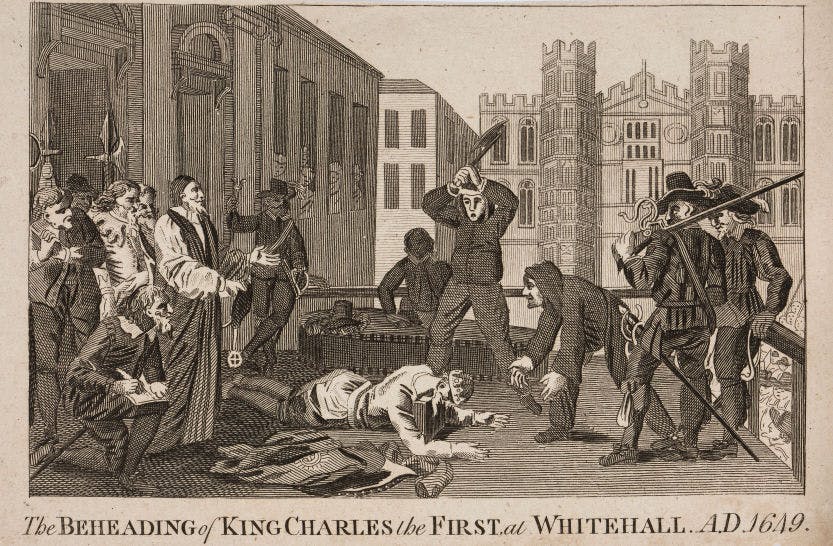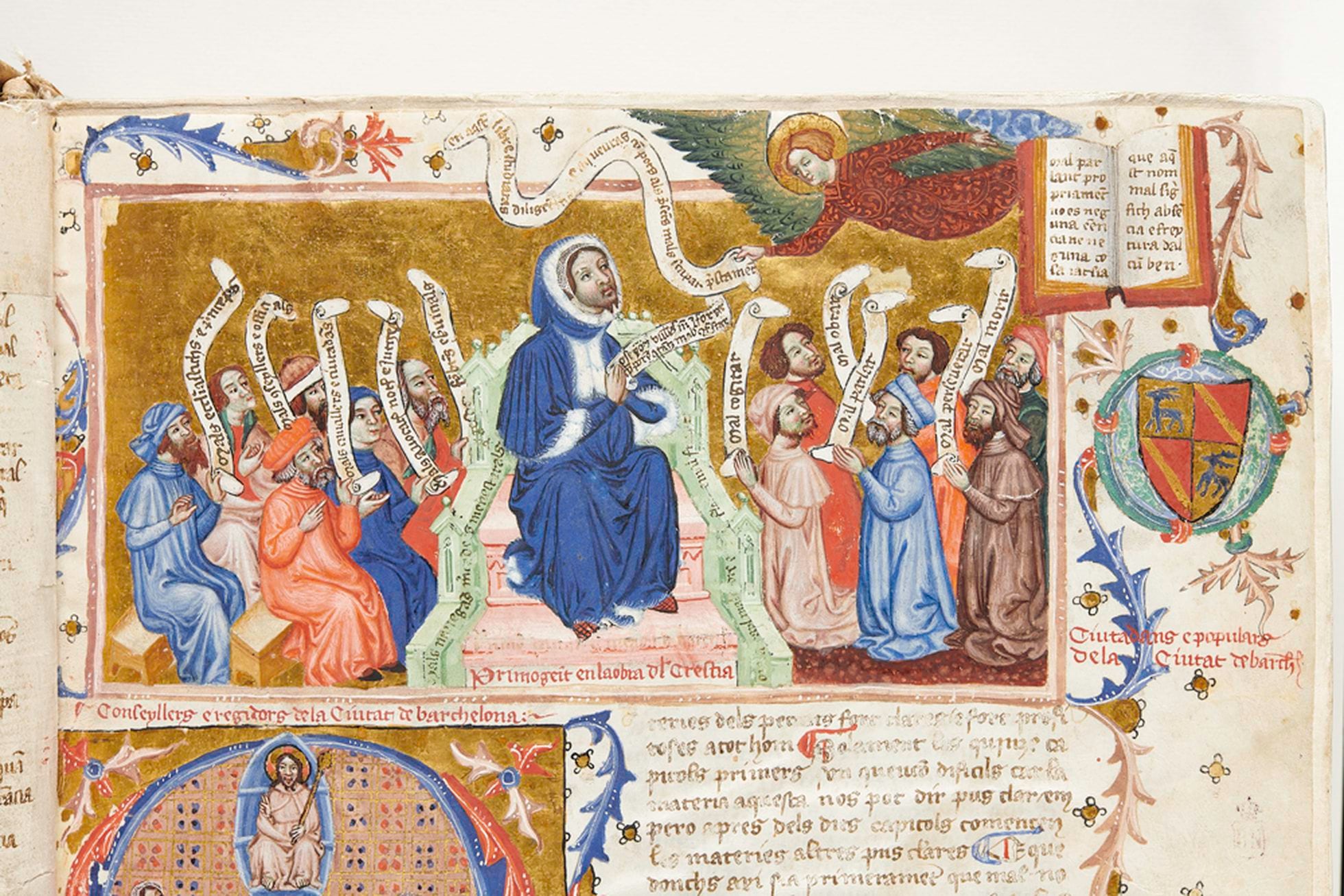People have asked me what I think of the new Motu Proprio. Frankly, it does not impact me directly since I do not have access to the Traditional Latin Mass, anyway. I am glad to see that many bishops are continuing the Latin Mass in their dioceses. One result of the Motu Proprio is to draw attention to the "Extraordinary Form" of the Latin Mass, which is why I think it will ultimately backfire. Instead of killing the old mass it will make it more popular.
I have to be honest. Some of the meanest, most evil people I have ever met have been traditionalist Catholics, or at least, they saw themselves as traditionalists. There are some people who use the traditional liturgy as a club and a means of feeling superior. There are among them people who have caused me and my family a great deal of suffering. However, among the sincere prayerful friends who love tradition are some of the holiest people I have ever known.
By the way, Vatican II never said anything about getting rid of Latin, as is made clear by
Sacrosanctum Concilium.
From Cardinal Mueller at The Catholic Thing:
In his “Letter to the Bishops of the Whole World,”
which accompanies the motu proprio, Pope Francis tries to explain the
motives that have caused him, as the bearer of the supreme authority of
the Church, to limit the liturgy in the extraordinary form. Beyond the
presentation of his subjective reactions, however, a stringent and
logically comprehensible theological argumentation would also have been
appropriate. For papal authority does not consist in superficially
demanding from the faithful mere obedience, i.e., a formal submission of
the will, but, much more essentially, in enabling the faithful also to
be convinced with consent of the mind. As St. Paul, courteous towards
his often quite unruly Corinthians, said, “in the church I would rather
speak five words with my mind, so as to instruct others also, than ten
thousand words in tongues.” (1 Cor 14:19)
This dichotomy between
good intention and poor execution always arises where the objections of
competent employees are perceived as an obstruction of their superiors’
intentions, and which are, therefore, not even offered. As welcome as
the references to Vatican II may be, care must be taken to ensure that
the Council’s statements are used precisely and in context. The
quotation from St. Augustine about membership in the Church “according
to the body” and “according to the heart” (Lumen Gentium 14) refers to
the full Church membership of the Catholic faith. It consists in the
visible incorporation into the body of Christ (creedal, sacramental,
ecclesiastical-hierarchical communion) as well as in the union of the
heart, i.e. in the Holy Spirit. What this means, however, is not
obedience to the pope and the bishops in the discipline of the
sacraments, but sanctifying grace, which fully involves us in the
invisible Church as communion with the Triune God.
For the unity
in the confession of the revealed faith and the celebration of the
mysteries of grace in the seven sacraments by no means require sterile
uniformity in the external liturgical form, as if the Church were like
one of the international hotel chains with their homogenous design. The
unity of believers with one another is rooted in unity in God through
faith, hope, and love and has nothing to do with uniformity in
appearance, the lockstep of a military formation, or the groupthink of
the big-tech age.
Even after the Council of Trent, there always
was a certain diversity (musical, celebratory, regional) in the
liturgical organization of Masses. The intention of Pope Pius V was not
to suppress the variety of rites, but rather to curb the abuses that had
led to a devastating lack of understanding among the Protestant
Reformers regarding the substance of the sacrifice of the Mass (its
Sacrificial character and Real Presence). In the Missal of Paul VI,
ritualistic (rubricist) homogenization is broken up, precisely in order
to overcome a mechanical execution in favor of an inner and outer
active participation of all believers in their respective languages and
cultures. The unity of the Latin rite, however, should be preserved
through the same basic liturgical structure and the precise orientation
of the translations to the Latin original.
The Roman Church must
not pass on its responsibility for unity in cult to the Bishops’
Conferences. Rome must oversee translation of the normative texts of the
Missal of Paul VI, and even of the biblical texts, that might obscure
the contents of the faith. Presumptions that one may “improve” the verba
domini (e.g. pro multis – “for many” – at the consecration, the et ne
nos inducas in tentationem – “and lead us not into temptation” – in the
Our Father), contradict the truth of the faith and the unity of the
Church much more than celebrating Mass according to the Missal of John
XXIII.
The key to a Catholic understanding of the liturgy lies
in the insight that the substance of the sacraments is given to the
Church as a visible sign and means of the invisible grace by virtue of
divine law, but that it is up to the Apostolic See and, in accordance
with the law, to the bishops to order the external form of the liturgy
(insofar as it has not already existed since apostolic times).
(Sacrosanctum Concilium, 22 § 1)
The provisions of Traditionis
Custodes are of a disciplinary, not dogmatic nature and can be modified
again by any future pope. Naturally, the pope, in his concern for the
unity of the Church in the revealed faith, is to be fully supported when
the celebration of Holy Mass according to the Missal of 1962 is an
expression of resistance to the authority of Vatican II, which is to
say, when the doctrine of the faith and the Church’s ethics are
relativized or even denied in the liturgical and pastoral order. (Read more.)
From Monsignor Charles Pope:
While people on both “sides” may have preferences, even strong
preferences, there has been mutual respect and a willingness to make
room for one another. Whatever tensions do exist, they are minor and not
so different than the tensions that emerge from the diverse mosaic of
ethnic communities.
In
this diocese Mass is celebrated in dozens of languages. Some of our
Eastern Rite liturgies are also celebrated in our Roman Rite parish
churches. We also have one parish that hosts the Anglican liturgical
tradition and nearly a dozen who host the Neocatechumenal Way liturgy
with all its adaptations. Somehow, we all make room for one another and
deal with the logistical challenges well enough.
Apparently, Pope Francis does not see this rich and peaceful diversity
when it comes to the Traditional Latin Mass. Instead, he writes to the
world’s bishops in his cover letter that he sees something very
different:
“An
opportunity offered by St. John Paul II and, with even greater
magnanimity, by Benedict XVI, intended to recover the unity of an
ecclesial body with diverse liturgical sensibilities, was exploited to
widen the gaps, reinforce the divergences, and encourage disagreements
that injure the Church, block her path, and expose her to the peril of
division.” (Read more.)
From The New Liturgical Movement:
People who take the time to sit down and study Sacrosanctum Concilium are
often struck by how much of this document is unknown, ignored, or
contradicted by contemporary Catholic practice. Often, there are phrases
that are so rich, and yet the manner in which they have been turned
into slogans has undermined their original nuance and depth.
The most notorious victim of this process of journalistic simplification has been the notion of “active participation” or participatio actuosa. The word actuosa itself
is very interesting: it means fully or totally engaged in activity,
like a dancer or an actor who is putting everything into the dancing or
the acting; it might be considered "super-active." But what is the
notion of activity here? It is actualizing one's full potential,
entering into possession of a good rather than having an unrealized
capacity for it. In contemporary English, "active" often means simply
the contrary of passive or receptive, yet in a deeper perspective, we
see that these are by no means contrary. I can be actively receptive to
the Word of God; I can be fully actualizing my ability to be acted upon
at Mass by the chants, prayers, and ceremonies, without my doing much
of anything that would be styled “active” in contemporary English.[Note
1] As St. John Paul II explained in an address to U.S. bishops in 1998:
Active participation certainly means that, in gesture, word, song and
service, all the members of the community take part in an act of
worship, which is anything but inert or passive. Yet active
participation does not preclude the active passivity of silence,
stillness and listening: indeed, it demands it. Worshippers are not
passive, for instance, when listening to the readings or the homily, or
following the prayers of the celebrant, and the chants and music of the
liturgy. These are experiences of silence and stillness, but they are in
their own way profoundly active. In a culture which neither favors nor
fosters meditative quiet, the art of interior listening is learned only
with difficulty. Here we see how the liturgy, though it must always be
properly inculturated, must also be counter-cultural. [link]
If your choir or schola sings Proper chants or motets at Mass, or if
you’d like to see this happen someday, make sure you have this text from
John Paul II ready for the person who objects: “But the people need to
be singing everything!” Dom Alcuin Reid explained the Council’s
intention very succinctly in an interview last December:
The Council called for participatio actuosa, which is primarily
our internal connection with the liturgical action—with what Jesus
Christ is doing in his Church in the liturgical rites. This
participation is about where my mind and heart are. Our external actions
in the liturgy serve and facilitate this. But participatio actuosa is
not first and foremost external activity, or performing a particular
liturgical ministry. That, unfortunately, has been a common
misconception of the Council’s desire. [link]
Now, even with the common misunderstanding of “actual” cleared out of
the way, it is an extremely curious fact that the full expression from Sacrosanctum Concilium 14 is rarely quoted: “Mother Church earnestly desires that all the faithful should be led to that full, conscious, and active participation
in liturgical celebrations which is demanded by the very nature of the
liturgy” (in the original: "Valde cupit Mater Ecclesia ut fideles
universi ad plenam illam, consciam atque actuosam liturgicarum
celebrationum participationem ducantur, quae ab ipsius Liturgiae natura
postulatur"). Whatever happened to “full” and “conscious”? (Read more.)
From The Pillar:
Harder to measure is the number of diocesan priests who celebrate
the Extraordinary Form. Eighty-eight percent of the Extraordinary Form
Mass venues listed in the directory are churches not maintained by one
of the fraternities or orders dedicated exclusively to it. It seems
reasonable to conclude that most of the Masses offered in the
Extraordinary Form in the U.S. are celebrated by diocesan clergy.
The
data suggests these are not mostly older priests who retain an
attachment to the form of the Mass offered in their youth: A priest
would need to be at least 76 to have offered the Extraordinary Form of
the Mass before the promulgation of the Ordinary Form in 1970.
Some
diocesan seminaries in the U.S. have received enough requests from
their students to begin offering liturgical training in the
Extraordinary Form.
The United Kingdom has around 2,400 active
Catholic parish churches of which 157 (or 6.5%) offer the Extraordinary
Form. France is harder to estimate, because it has around 45,000 church
buildings which are legally owned by the state.
But given that it
has only 7,000 priests under age 75, we might roughly estimate the 199
Extraordinary Form Masses listed in France in the directory as
representing between 1.5% and 3% of Masses available. (Read more.)
From Dr. Janet Smith at The National Catholic Register:
In Traditionis Custodes (Guardians of the Tradition), the motu proprio that
sets out provisions for curtailing the availability of the Mass based
on the 1962 Missal promulgated by Pope St. John XXIII (here referred to
as the traditional Latin Mass), Pope Francis states that his decisions
are based on consultations with bishops worldwide (the results of which
have never been made public).
Thanks be to God, most of the U.S. bishops who have issued a statement about the motu proprio
have granted permission for the status quo to continue as they study
the issue. I hope their study primarily involves hearing from the
priests who host a traditional Latin Mass at their parishes. What the
bishops learn, I believe, will convince them that the traditional Latin
Mass is making an enormous contribution to the faith of their flock and
the strength of the parish and, thus, should continue.
Ever since Pope Benedict XVI announced in Summorum Pontificum
that the traditional Latin Mass had never been abrogated and can never
be abrogated and stated that priests who are approached by groups of the
faithful who want it may offer it without seeking permission from the
bishop, there has been an amazing renaissance of the traditional Latin
Mass.
Orders such as the Institute of Christ the King the Sovereign Priest
that exist to offer and promote it have been burgeoning at the seams;
the parish in Detroit keeps adding more Masses to accommodate those who
wish to attend. Parishes that offer the traditional Latin Mass have
found that young families flock to the Mass, contribute generously to
the parish, and become powerful forces for spreading the Gospel. (Read more.)
More HERE, HERE, and HERE.
Share




























